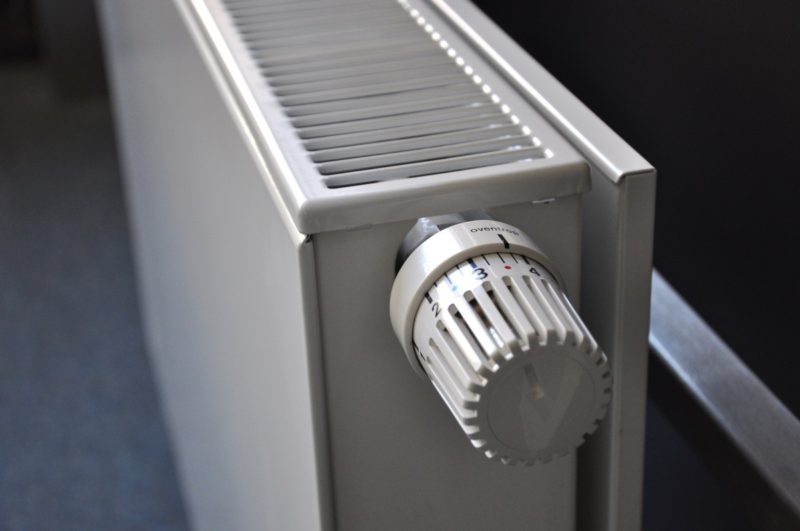Do you want to know tankless water heater how it works? Don’t worry, and you have arrived at the right place. Without the necessity of a storage reservoir, tankless water heaters warm the water instantly.
Whenever you switch on a warm water tap, chilly water runs through a heat transfer in the device, heated by a natural gas hob or an electric component. Tankless water heaters provide a consistent stream of heat as a consequence. Users don’t have to queue for a water storage tank to load up.
The cold water warms the water immediately by passing through an aluminum heat transfer. The machine runs into standby mode whenever the hot water is turned off. The vent on a tankless water heater overwhelms any gases from outside the house. Tankless water heaters usually offer 2 to 6gallons of heated water per min. Let’s get started to learn more.
Steps In Tankless Water Heater Works
These steps help you in understanding tankless water heater how it works. Tankless water heaters are also called on-demand water heaters, and these water heaters provide instant hot water whenever you need to use it. Read the below-mentioned steps carefully for better understanding.
Step #1. Turn on the hot water faucet
You’ll need to switch on the warm water to ensure a hot current is coming through the pipelines. Of course, that’s not always the case in a modern environment. When you just have one knob, make sure it’s facing the heated water. It’s a lot easier if you do have two knobs. Find and set the heated water valve to enable warm water to flow throughout.
Step #2. The heater is filled with water
Well, what else can you anticipate that you’ve switched on the heated water? When using a traditional water heater, people expect hot water to flow from the tanks to the pipelines. In a tankless water heater, though, chilly water runs past sensors, which activate the inner computer and start the heat treatment.
Step #3. The water flow sensor measures the flow of water
Once the inbuilt computer is activated, it determines how intense the burners must be to transfer heat from the water to the desired temperature. The gas burners or an electric component can be used for this. In any case, it ensures a steady supply of hot water with no need to wait for a container to refill.
Step #4. The computer automatically ignites the burner
So, how would the on-demand water heater generate so much hot water? Following the start of the burner, the water flows around a heat transfer until it achieves temperature. The water then leaves the tankless water heater and travels via the pipelines until it finally arrives.
Step #5. The heat exchanger is filled with water that circulates
You have an infinite stream of hot with an on-demand water heater. Since there is no more need for heated water, the tankless water heater immediately closes down and ceases consuming power. As a result, you will benefit from energy efficiency and consistent and hot freshwater.
Pros And Cons Of Tankless Water Heater
Demand water heaters are 24 percent–34 percent more power effective than traditional storage tank heaters for residences that utilize 42 gallons or even less hot water each day. For households that use a bunch of hot water — roughly 84 gallons each day — these can save 8 – 15 percent on electricity. No source of heated water may be drained with a tankless system. On the other hand, the water heater warms water just when needed.
It will continue to do so as soon as there is a need, which means you will never be out of heated water! In rare circumstances, installing a tankless water heater at every heated water output may increase energy efficiency. The on-demand water heater has a higher cost than just an existing storage water heater. Know how much is a tankless water heater. However, tankless water heaters often last longer and have lower effective and fuel expenses, balancing the higher consumer price. The majority of on-demand water heaters have a lifespan of over twenty years.
They also contain easy-to-replace components, allowing them to last for several more years. Storage heaters, on the other hand, endure approximately ten years. High idle heat losses related to stored water heaters are avoided with on-demand water heaters. While gas-fired on-demand water heaters have better flow rates than electrics, they may waste time and energy, whether they have a pilot light. When contrasted to a stored water heater, sometimes this can balance the removal of standby power loss.
The pilot light of a gas-fired stored water heater warms the water tank, saving electricity. The cost to run an on-demand water heater’s pilot light varies depending on the model. Again for the type you’re contemplating, check the company’s documentation to see how much gasoline the pilot light requires. Then a fixed pilot light seeks versions with an interrupted ignition mechanism. This mechanism looks similar to the ignition timing device used on some natural gas heaters, as well as cooking ranges and microwaves.
Read more about the downside of a tankless water heater.
It’s A Wrap!
We are delighted to know that you have learned tankless water heater how it works. These heaters are the latest water heaters, and they provide us with hot water whenever we demand it. These heaters are easy to install and less costly to maintain. Anyway, you may want to know how to clean tankless water heater. Thank you, my friends, for staying with us.

